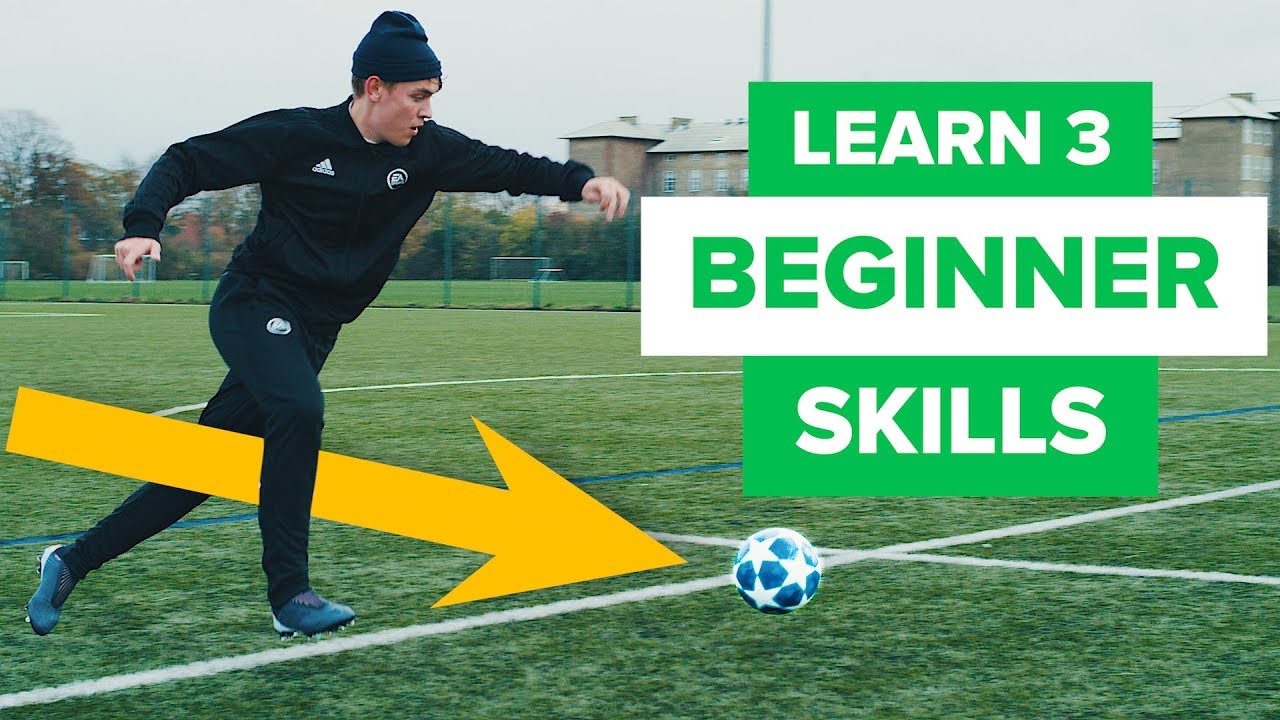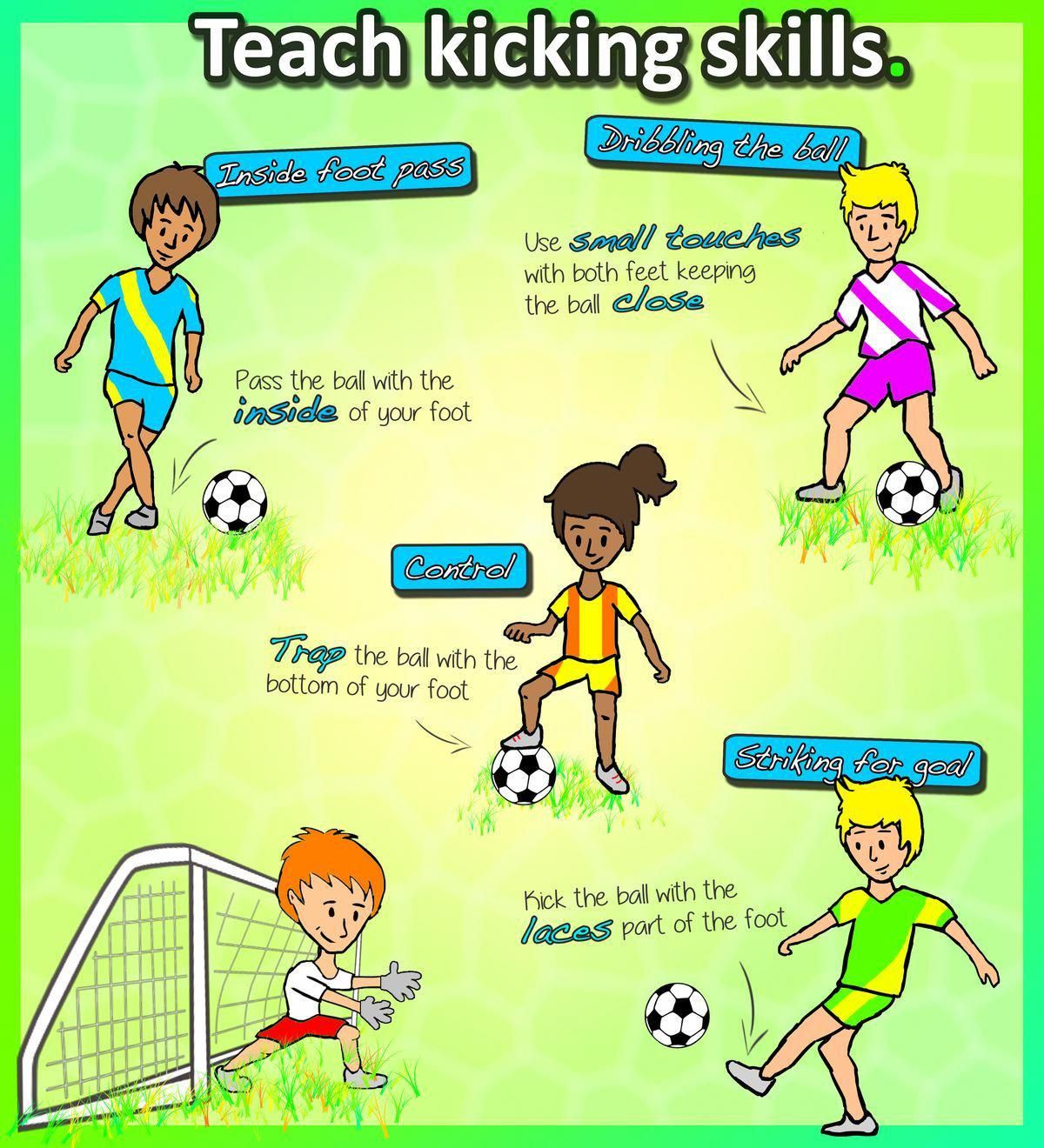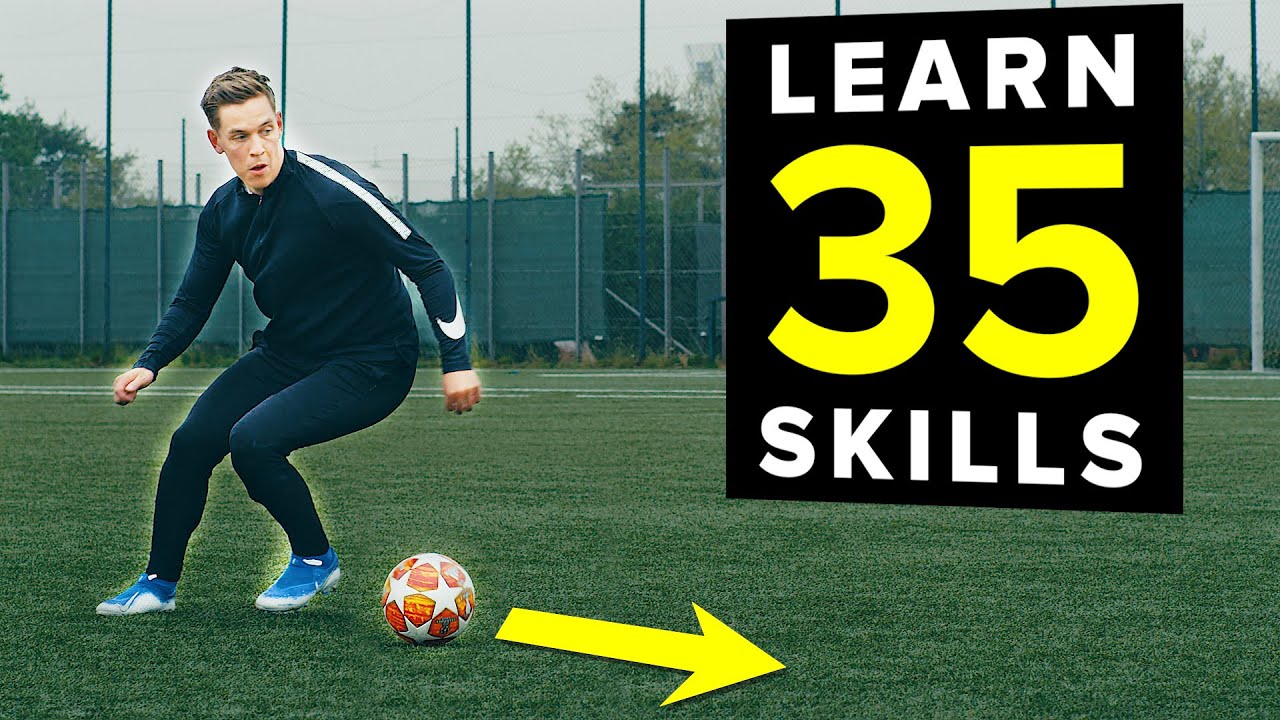Welcome to the exciting world of football! Whether you’re just starting out or have kicked a ball around a few times, mastering football skills can enhance your game tremendously. Football, also known as soccer in some countries, is more than just a sport; it's a way to connect with others, improve your fitness, and have loads of fun. In this section, we’ll lay the groundwork for understanding the core skills every beginner should focus on.
Football skills can be categorized into several key areas, including dribbling, passing, shooting, and defending. As a budding footballer, it's crucial to grasp the basics to build a solid foundation for your future development. Luckily, mastering these skills doesn’t have to be daunting! Let's break it down together.
- Dribbling: This refers to how you maneuver the ball while walking, running, or sprinting. Good dribbling keeps defenders at bay and creates scoring opportunities.
- Passing: Essential for team play, perfecting your passing helps you communicate and collaborate effectively with teammates.
- Shooting: Want to score goals? Focus on your shooting technique. From short-range to long-range efforts, having a powerful shot can make all the difference.
- Defending: Understanding how to defend effectively reduces the chances of the opposing team scoring. Learn positioning and tackling techniques.
Remember, developing these skills takes time and effort, but with consistent practice, you'll see improvement. So lace up those boots, set your sights on the pitch, and let's dive into the next essential aspect of your football journey—equipment!
Essential Equipment for Beginners

Getting started in football means you’ll need some essential gear. You don't have to break the bank, but having the right equipment can make your training and games much more enjoyable and effective. Here’s a list of must-have items for every beginner football player:
- Football Boots: Having the right pair of shoes is crucial. Look for boots that provide good grip and support, specifically designed for the type of playing surface you’ll be on—firm ground (FG) or artificial turf (AG) boots are popular choices.
- Shin Guards: Protecting your shins is important as football can get a little rough. Look for lightweight, padded shin guards that offer comfort without hindering movement.
- Soccer Ball: Of course, you’ll need a ball to practice your skills! For beginners, size 4 balls are typically recommended for ages 8-12, while size 5 is the standard for older youth and adults.
- Clothing: Wear comfortable, moisture-wicking clothes that allow you to move freely. A lightweight jersey and shorts paired with a pair of athletic socks will do just the trick!
- Water Bottle: Staying hydrated is key, especially during practice. Keep a water bottle handy to ensure you're always hydrated.
While these are the essentials, feel free to explore additional gear as you progress. Remember, the right equipment can enhance your performance and help you enjoy the beautiful game even more! Now, let’s get ready to kick off your football journey.
Basic Drills to Improve Your Skills

When you’re starting out in football, practice makes perfect! Focusing on basic drills can significantly enhance your skills. Here are some essential exercises that every beginner should incorporate into their training routine:
- Dribbling Drills: Set up a series of cones in a straight line or a zigzag pattern. Practice weaving the ball through the cones using short touches. This drill helps improve your control and agility.
- Passing Drills: Pair up with a friend to practice passing. Start about 10-15 feet apart and take turns passing the ball back and forth. Focus on using the insides of your feet for accuracy. You can also use a wall for solo practice—kick the ball against the wall and try to control it as it rebounds.
- Shooting Drills: Find a goal (or use any marked area) and practice shooting from different distances. Focus on both power and precision. Aim for corner targets within the goal to build accuracy.
- Juggling: Start with one foot and try to keep the ball in the air as long as possible. This helps improve your touch and understanding of ball dynamics. As you get better, switch feet and try using different parts of your body.
Consistency is key! Set aside time each week to practice these drills and you’ll notice improvement in no time.
Understanding Ball Control Techniques

Ball control is one of the fundamental skills every footballer needs to master. It allows you to handle the ball effectively, maintain possession, and create scoring opportunities.
Here are some key techniques to improve your ball control:
- Receiving the Ball: Position your body to face the ball as it approaches. Use the inside of your foot to cushion the ball as you receive it, allowing for better control and distribution.
- Dribbling: Keep the ball close to your feet while dribbling. Use small touches to maintain better control, especially when maneuvering through defenders. Your body should stay low to enable quick changes in direction.
- Shielding: Use your body to shield the ball from opponents. Position yourself between the ball and the defender, using your body weight to protect it as you look for passing options.
- Ball Mastery: Spend time practicing touches with all parts of your body, not just your feet. Use your thighs, chest, and even your head to control the ball, enhancing your overall versatility.
By honing these ball control techniques, you'll become more confident in your ability to handle the ball regardless of the game situation.
5. Developing Passing Accuracy

When it comes to football, passing accuracy is absolutely crucial. It’s the foundation on which effective teamwork and strategy is built. Without accurate passes, you could find yourself losing possession quickly, and nobody wants that, right? So, let's dive into some tips to help you improve your passing accuracy!
- Focus on Technique: Always keep your head up and your eyes on your target. This helps in judging the distance and angle more effectively.
- Proper Foot Placement: Use the correct part of your foot for passing. The inside of your foot produces the most accuracy. Try to connect with the ball in the middle, not on the edges.
- Follow Through: Your kicking leg’s follow-through is important. After hitting the ball, your foot should naturally continue in the direction of your target. This helps guide the ball where you want it to go.
Practice is key to mastering passing accuracy. Here’s a quick drill you can try:
| Step | Action |
|---|---|
| 1 | Set up cones in a straight line, about 5-10 feet apart. |
| 2 | Have a partner stand at the end of the cone line. |
| 3 | Take turns passing the ball through the cones to each other, focusing on accuracy over speed. |
With consistency and a focus on technique, your passing game will definitely improve over time!
6. Improving Shooting Techniques
Shooting is one of the most exciting parts of football! Scoring goals is what the game is all about, and mastering your shooting technique is essential for any beginner. Let’s break this down into manageable steps, shall we?
- Foot Positioning: Always approach the ball at an angle. Your non-kicking foot should be placed beside the ball to guide your stance.
- Choosing the Correct Part of the Foot: Similar to passing, using the instep (the top part of your foot) is often best for powerful shots, while the inside of the foot can be used for more accurate strikes.
- Aim for the Corners: Keep your eye on the target and try to aim for the corners of the goal. This makes it harder for the goalie to block your shot.
Here's a nifty shooting drill to help you practice:
| Step | Action |
|---|---|
| 1 | Find a spot about 12-15 yards away from a goal. |
| 2 | Place a cone in front of the goal for targeting. |
| 3 | Take turns shooting at the cone, focusing on your technique and accuracy. |
With dedication and practice, you’ll be well on your way to becoming a sharpshooter on the field!
7. Practicing Defensive Maneuvers
When you're just starting out in football, mastering defensive maneuvers can really up your game. Defense isn't just about being reactive; it’s about being smart, reading the game, and positioning yourself correctly. So, let’s break it down!
First off, one of the key components to effective defending is the technique of tackling. There are two main types you should focus on:
- Standing tackle: This involves approaching the opponent from a distance and getting the ball while staying on your feet. Timing is essential!
- Sliding tackle: Perfect for when your opponent gets past you. Slide in to get a touch on the ball; just be careful not to miss and take the player out!
Another vital aspect is learning how to position yourself. Always keep your body between the ball and the goal. Additionally, staying on your toes helps you react quickly, shifting your weight based on your opponent’s movements.
Lastly, don’t forget about communication with your teammates. Use phrases like “man on” or “clear it” to help maintain solid defensive organization.
To practice these skills, try these drills:
| Drill | Description |
|---|---|
| 1v1 Defending | Take turns attacking and defending with a partner to practice tackling and positioning. |
| Recovery Runs | Work on sprinting back into position after an attack to sharpen your decision-making skills. |
8. Keeping Fit: Importance of Physical Conditioning
So, you might think playing football is just about kicking the ball around, but physical conditioning is the backbone of your performance. To truly excel in football, you have to treat your body like an athlete’s!
Why is physical conditioning significant? Here are a few reasons:
- Enhanced Endurance: Football matches can last 90 minutes, and being fit allows you to keep up your energy levels throughout the game.
- Injury Prevention: Stronger muscles and better overall fitness reduce your risk of injuries. It's crucial to condition your body to handle the demands of football.
- Faster Recovery: Being fit can help you bounce back quicker from games and training, which means more practice and improvement!
To keep fit, incorporate various types of training into your routine:
- Cardiovascular Training: Running, cycling, or swimming to boost your stamina.
- Strength Training: Focus on exercises that work your legs, core, and upper body—squats, lunges, and push-ups are great starts.
- Flexibility: Stretching exercises and yoga can enhance your agility on the field.
As you can see, mastering football skills isn't just about technique. Staying fit plays a huge role in your success on the pitch. So lace up those trainers and get moving!
9. Finding Resources and Training Programs
Starting your football journey can feel overwhelming, especially when it comes to choosing the right resources and training programs. Don't sweat it! There are numerous options out there tailored for beginners that can help hone your skills and build your confidence on the pitch.
Firstly, consider local community centers or sports clubs. Most of these organizations offer introductory football programs that are perfect for novices. These programs typically involve:
- Skill-building workshops
- Team drills focused on fundamentals
- Friendly match play to enhance real-game experience
Another fantastic resource is online platforms. Websites like YouTube host countless tutorials from professional coaches and players. Here, you can find videos that cover everything from basic dribbling techniques to advanced shooting drills. A few channels you might want to check out include:
- Soccer Skills – Tailored for all skill levels
- Progressive Soccer – Offers a unique approach to skill mastery
- Football Academy – Focused on youth and beginner training
Don’t forget about apps! There are several mobile applications designed specifically for football training, which include features like:
| App Name | Features |
|---|---|
| Football Coach | Training drills and session planning |
| Soccer Training | Video tutorials and personalized drills |
| 12 Football Drills | Step-by-step instructions for various drills |
In summary, whether you're joining a local team, watching online tutorials, or using apps, there’s a wealth of resources at your fingertips. Dive in, mix it up, and enjoy the journey!
10. Conclusion and Next Steps in Your Football Journey
Now that you've armed yourself with the knowledge and resources to kick-start your football journey, let’s talk about what comes next. Remember, the road to mastering football skills is an exciting one, filled with learning and personal growth.
First off, set realistic goals. Ask yourself:
- What specific skills would you like to improve?
- How often can you dedicate time to practice?
- Are you looking to play with a team or for fun?
Next, create a practice schedule that fits your lifestyle. Consistency is key in improving your skills. Make it a routine! Whether it’s a couple of days a week or daily practice, the important part is to stick with it. Consider incorporating:
- Individual training sessions focusing on different skills
- Playing with friends or joining pickup games
- Watching matches and analyzing players to learn from the pros
Finally, always stay positive and open to feedback. Learning any sport is a journey filled with ups and downs, but the joy is in the process. Celebrate your improvements, whether it's a perfected pass or a successful goal. Don’t hesitate to seek out more advanced training programs or local leagues as you become more confident.
Your football journey has just begun. Embrace it, enjoy the game, and who knows? You might just find yourself playing on a much bigger stage one day!
 admin
admin








